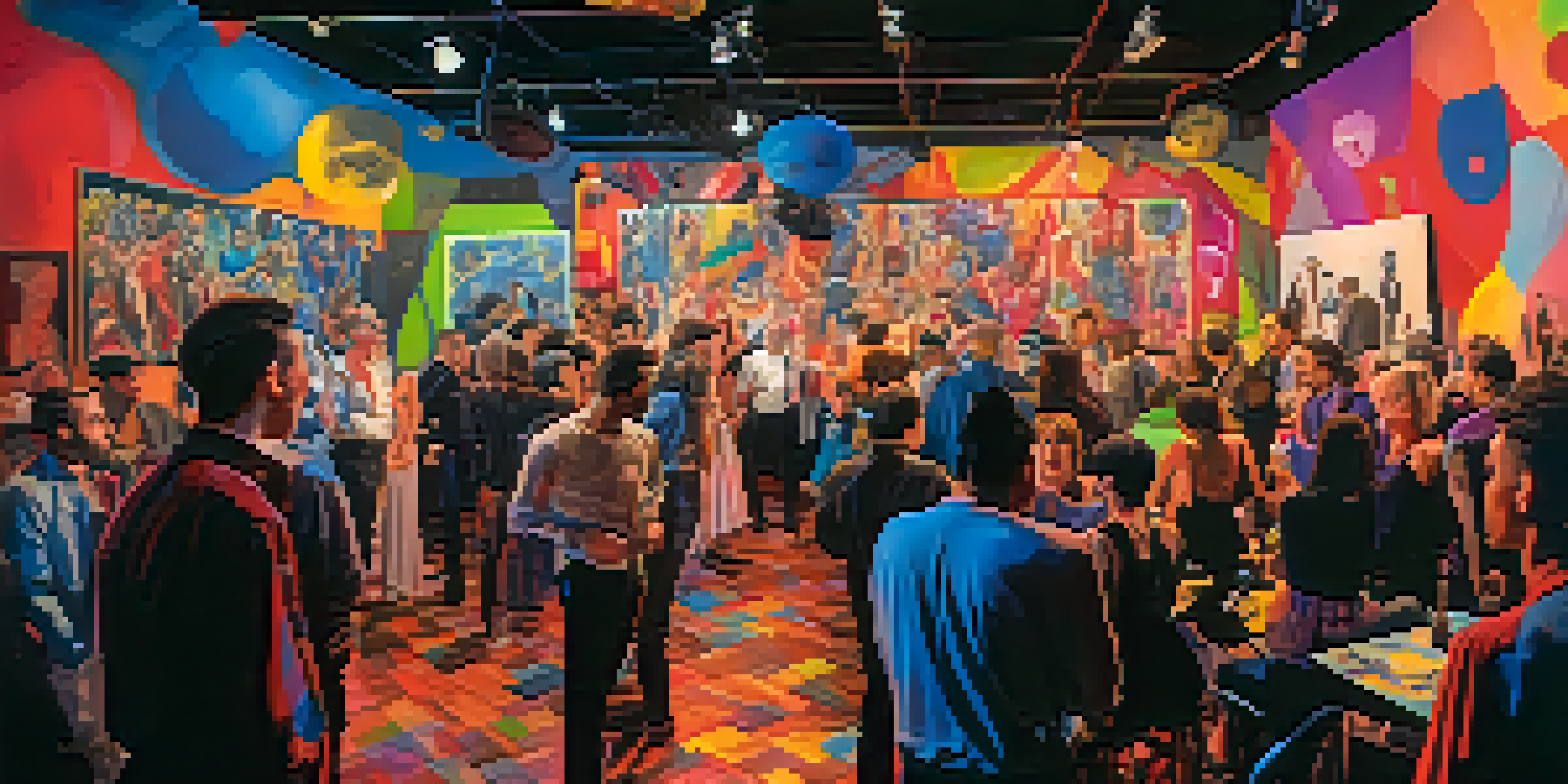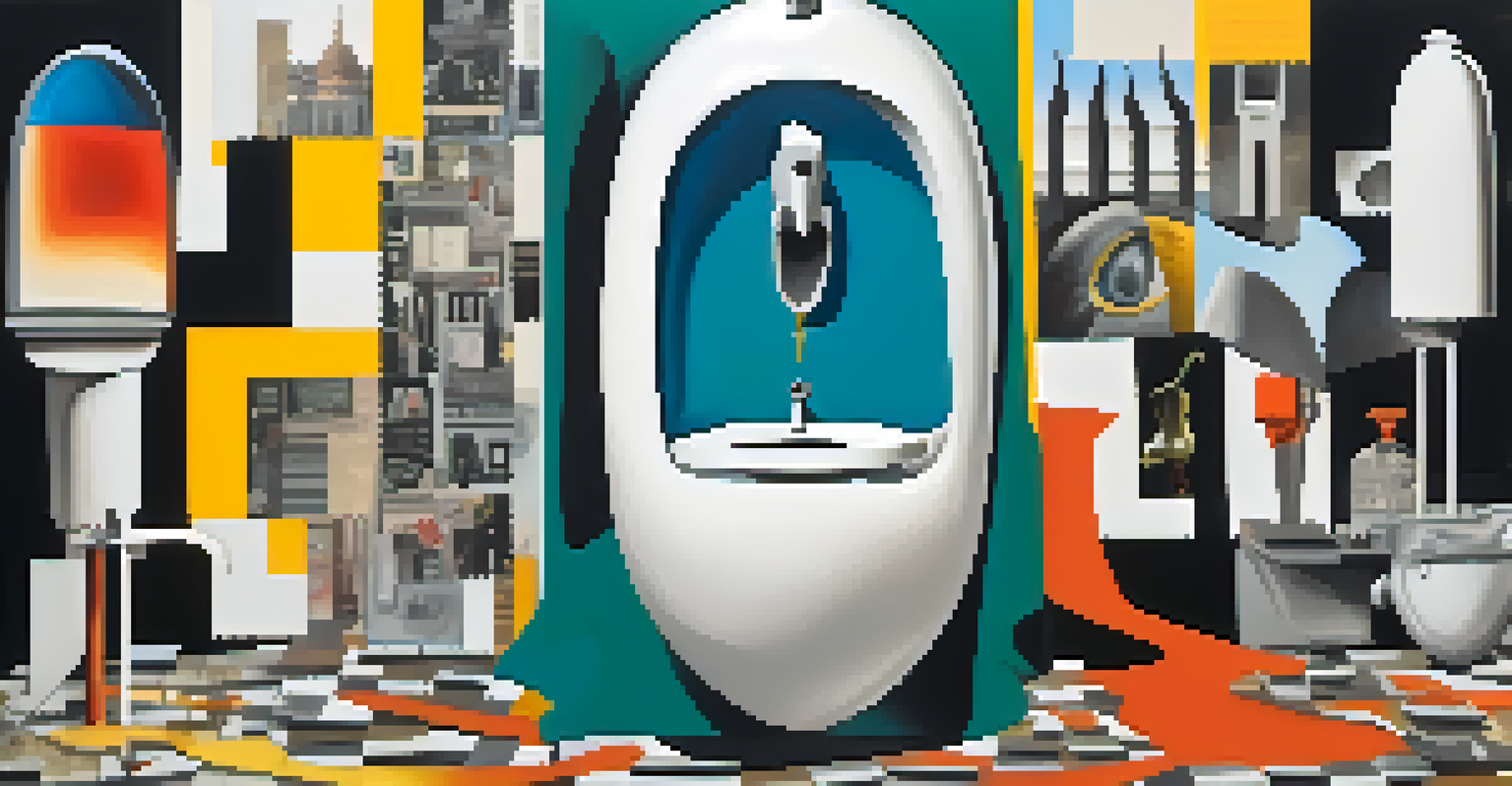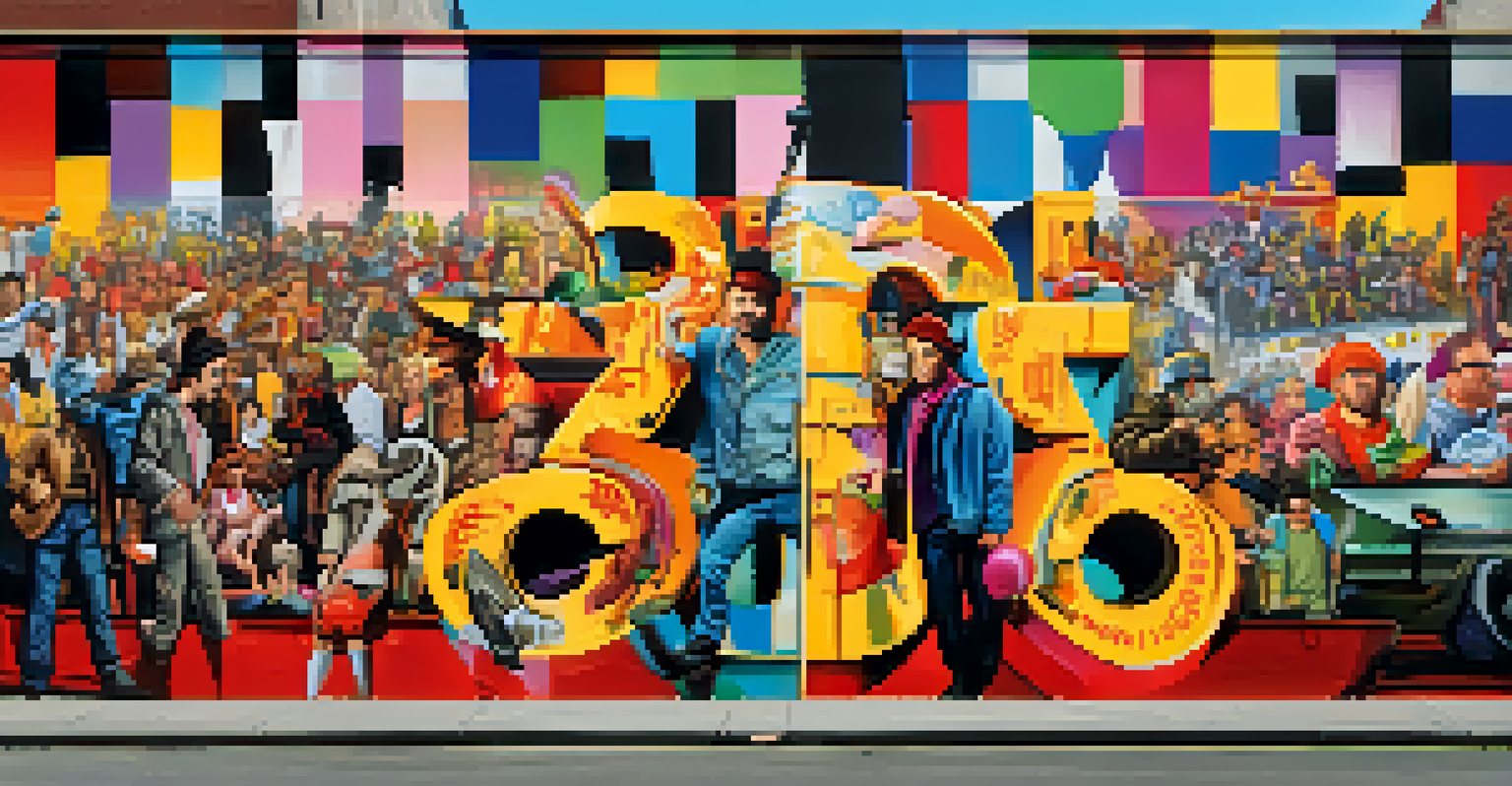Dada: Challenging the Norms of Art and Society Post-WWI

Understanding Dada: A Brief Overview
Dada emerged in the early 20th century as a response to the horrors of World War I. It was not just an art movement but a philosophical stance that questioned the very fabric of society. Artists sought to break free from traditional aesthetics and embrace chaos and absurdity instead. Dada was a rebellion against the rationalism that many believed had led to the war.
Dada is a state of mind.
The movement originated in Zurich, Switzerland, where artists gathered to express their disillusionment through various mediums like poetry, visual arts, and performance. Figures like Hugo Ball and Tristan Tzara played pivotal roles in its inception, promoting spontaneity and anti-art sentiments. The Dadaists believed that art should reflect the irrationality of life rather than conform to established norms.
By using unconventional materials and methods, Dada artists aimed to provoke thought and challenge viewers' perceptions. This radical approach laid the groundwork for many future art movements, including Surrealism and Pop Art, establishing Dada as a cornerstone of modern artistic expression.
Dadaism's Anti-Art Philosophy
At the heart of Dadaism was the concept of 'anti-art'—a rejection of traditional artistic values and aesthetics. Dada artists believed that conventional art was complicit in societal norms that had led to war and suffering. They sought to dismantle these norms and create art that was chaotic, nonsensical, and often provocative.

For instance, Marcel Duchamp's infamous 'Fountain,' a urinal presented as art, exemplified this anti-art sentiment. Duchamp challenged the very definition of what could be considered art, encouraging viewers to question their preconceived notions. Through such works, Dadaists aimed to blur the boundaries between art and everyday life.
Dada: Art as a Response to Chaos
Dada emerged as a revolutionary art movement that questioned societal norms and embraced chaos in response to the horrors of World War I.
This philosophy resonated deeply during a time when societal structures were being questioned. The Dada movement invited individuals to embrace absurdity, reflecting a world that had turned upside down. Ultimately, it paved the way for new forms of artistic expression that celebrated individuality and creativity over conformity.
Dada's Global Impact: A Movement Without Borders
Although Dada began in Europe, its influence quickly spread across the globe. Different cities adapted the Dada ethos in unique ways, leading to the emergence of various regional styles. New York, Berlin, and Paris became hotbeds for Dada activities, each contributing to the movement's diverse tapestry.
Art is not a mirror held up to reality but a hammer with which to shape it.
In New York, artists like Marcel Duchamp and Man Ray explored the intersection of photography and performance, pushing the boundaries of artistic expression. In Berlin, the emphasis was on political satire and social critique, with artists like George Grosz using their work to comment on contemporary issues. This worldwide exchange of ideas enriched the Dada movement, fostering a sense of international solidarity among artists.
Dada's global reach continues to resonate today, as many contemporary artists draw inspiration from its principles. The movement's emphasis on breaking down barriers and challenging societal norms remains relevant, encouraging new generations to think outside the box and redefine what art can be.
Performance Art: Dada's Unconventional Stage
Performance art became a significant aspect of the Dada movement, allowing artists to express their ideas in dynamic and often interactive ways. Dadaists organized events, readings, and performances that blurred the lines between artist and audience. These performances were often spontaneous, filled with improvisation and absurdity, reflecting the chaos of the world around them.
One notable example is the Cabaret Voltaire in Zurich, where artists would gather to perform poetry, music, and visual art. The atmosphere was electric, as participants engaged in a free-form exploration of creativity. These events invited attendees to become part of the art-making process, challenging the traditional passive role of the viewer.
Anti-Art Philosophy Redefines Boundaries
The Dadaists' anti-art philosophy challenged traditional definitions of art, encouraging viewers to question their preconceived notions and embrace absurdity.
Through performance, Dadaists sought to dismantle the barriers of traditional art forms and engage with society in innovative ways. This emphasis on live action and audience participation has influenced countless artists today, paving the way for the vibrant performance art scene we see in contemporary art.
Dada's Relationship with Politics and Society
Dada was not just an artistic movement; it was deeply intertwined with the political and social upheavals of its time. The aftermath of World War I left many disillusioned, prompting Dadaists to critique the political systems they believed had failed society. Their art often served as a form of protest against war, nationalism, and societal conformity.
For example, the Berlin Dadaists, led by figures like John Heartfield and George Grosz, utilized their art to comment on the rise of fascism and the socio-political climate in Germany. Through satirical works, they highlighted the absurdity of political ideologies and the suffering they caused. This critical lens allowed Dada to transcend mere artistic expression, becoming a vehicle for social change.
In this way, Dada became a catalyst for dialogue about the role of art in society. By challenging the status quo, Dadaists encouraged people to rethink their beliefs and engage with pressing issues. Their legacy reminds us that art can be a powerful tool for advocacy and transformation.
Legacy of Dada: Influencing Modern Art
The impact of Dada on modern art cannot be overstated. Its radical approach to creativity and expression laid the groundwork for numerous art movements that followed. Surrealism, for instance, drew heavily from Dada’s emphasis on the irrational and the subconscious, pushing creative boundaries even further.
Additionally, Dada's embrace of mixed media and unconventional materials has influenced contemporary artists who continue to experiment with form and content. Today, we see echoes of Dada in everything from installation art to digital media, proving that its innovative spirit remains alive and well.
Dada's Enduring Influence on Art
Dada's radical approach and rejection of convention continue to inspire contemporary artists, shaping movements like Surrealism and performance art.
Moreover, the movement's challenge to established norms encourages artists to explore new ideas about identity, culture, and society. By breaking free from tradition, Dada opened the door for future generations to express themselves authentically, making its legacy a crucial part of the ongoing dialogue in the art world.
Dada Today: Relevance in Contemporary Culture
While Dada originated over a century ago, its principles still resonate in today’s fast-paced, often chaotic world. Artists continue to draw inspiration from Dada’s rejection of convention and its embrace of the absurd. In a time characterized by political unrest and social change, the Dada ethos encourages a critical examination of our realities.
Contemporary art movements, such as street art and performance art, can trace their roots back to Dada, as they often challenge societal norms and provoke thought. The spirit of Dada lives on in the works of artists who use humor and absurdity to critique contemporary issues, proving that art can be a powerful means of commentary.

Moreover, the rise of digital art and social media platforms has created new avenues for artists to share their work and engage with audiences. This environment reflects Dada’s original intent to break barriers and redefine art, showcasing how its influence continues to shape the modern cultural landscape.